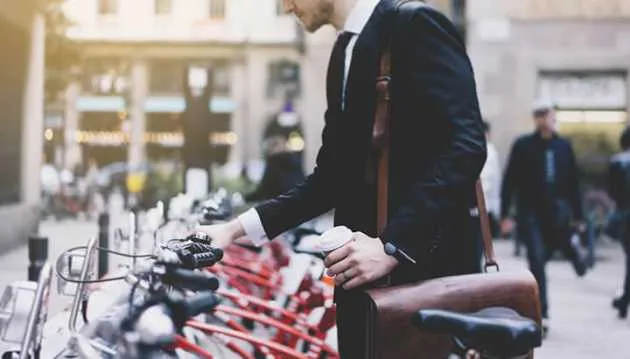It is common to hear people say they want to live an eco-friendly life, if only it were more affordable. Little do people know that living a more sustainable lifestyle ends up saving money in the long run. Here are nine eco-friendly choices you can make today that will help you financially tomorrow.
1. Purchase a smart thermostat
If the temperature of your home is not governed by a wise and all-knowing “Smart Thermostat” not only are you spending more money on your energy bills than you need to, you are also wasting energy.
Smart thermostats use sensors placed all over your home to determine which rooms need to be heated, cooled or just left alone. You can program what temperature your home will be at different times of the day. This allows homeowners to program their smart thermostat to be cooler when people are sleeping and to use less energy when no one is home.
Smart thermostats cost between $229 and $400. They are estimated to save homeowners 10 to 12 percent on their energy bill for heating and 15 percent for air conditioning. While they do require an upfront investment, they are a very valuable tool for anyone looking to lead a more eco-friendly life.
2. Shop at farmer’s markets

While it can be fun to walk into a Whole Foods and feel like an organic food-loving rockstar, it can also be expensive. For many people, especially those needing to feed a whole family, purchasing organic food can get too costly.
While the price difference between organic and non-organic food is closing a little, it still requires a little bit of craftiness to eat healthy and local without breaking the bank.
Growing your own food is ideal, but also requires you to have a large garden. In the absence of this, your best bet is to find a top-notch farmer’s market. Not just any farmer’s market will do, however. Some markets have become 95 percent vendor and about five percent farmer. Look for a farmer’s market that specializes in organic produce. You should be able to find local and organic food at a much more affordable price.
3. Unplug or power off appliances
Your electronics are using up energy, even when they are not powered on. This is commonly referred to as an “energy leak.” It is estimated to cost homeowners $200 a year or more. On top of the financial burdens, this is also a waste of energy.
One option is to simply unplug all electronics when they are not in use. An easier option might be to plug applicances into a powerbar and simply flip it on and off as required.
It might seem like a small thing, but $200 is not an amount of money most people want to simply throw away. And for someone looking to lead a more eco-friendly life, eliminating energy leaks is an easy way to reduce your impact.
4. Take advantage of government rebates
Some of you reading this will have been visited at your home by a door-to-door salesperson asking to take a look at your water heater, air conditioner or furnace. This person may have come off as a pushy, annoying salesperson who you immediately wanted to leave.
But these people want you to take part in a government rebate program to update your appliances to more energy-efficient models. It makes sense for you to do just that, from a financial and environmental perspective. You don’t need to go through the pushy salesperson (although if they are nice, you might choose to). A list of programs by state can be found here, and they will compensate you for the cost of energy-saving appliances.
Depending on how old your current appliances are, upgrading to more energy-efficient models could save you quite a bit on your energy bills and help reduce unnecessary energy consumption.
5. Have your furnace serviced
Experts recommend having your furnace looked at annually, but many people assume this is unnecessary. In fact, most people opt out of annual check-ups for their furnaces, but doing so can save you up to 30 percent on your energy bill.
6. Walk or bike places
Depending on what you have going on in your life, there might be some things you do that absolutely require you to drive a car. But it is also likely that some of you are using a car, or even taking public transit, when a better option might be to simply walk or bike.
There is a misconception about saved time that occurs when people compare walking with driving. Failed pedestrians often overestimate the strain of walking a long distance. They also underestimate the strain of looking for parking, being stuck in traffic and the overall unpleasantness involved in an automobile-based commute.
Walking and biking is a great form of exercise which helps give you more energy during the day. In turn, this will help you be more productive and stay in a better mood. You’ll feel happier and healthier while reducing your carbon footprint. Just factor in a bit of extra time for wherever you’re going.
7. Lease solar panels
Helping the transition from fossil fuels to renewable energy is one of the best things any person trying to live an eco-friendly life can do.
There is no more important environmental issue than reducing our dependence on carbon-intensive energy sources. Anyone who has solar panels installed on their rooftop can feel good knowing they are part of the solution.
So what’s the problem for most people? Solar panels require a hefty up-front investment. However, Elon Musk, the famous entrepreneur behind Tesla and SpaceX, also operates a company named SolarCity. The company will install solar panels on your rooftop for no money down.
The company owns all of the equipment and is, therefore, responsible for all the maintenance as well. If you’re a homeowner who wants to put solar panels on your roof, but you’re currently unable to put forth an upfront investment, check out the programs offered by SolarCity.
8. Prevent air from escaping through your windows
Making sure hot or cool air isn’t escaping your home (or trying to sneak in) is an excellent way to ensure that you are not spending extra money on your home energy bill. It is also a great way to ensure you are not being wasteful with your energy consumption.
Unfortunately, doing this can sometimes be expensive. Older windows are less efficient than newer ones at trapping air in and keeping outside air out. Enter “window inserts,” which retail at around $40. They can do the same job for you that upgrading to new windows would, without the hassle or the large price tag attached.
In a pinch, there is an even cheaper option for you, though it is not the most aesthetically pleasing one. Bubble wrap is a great material to cover your windows and prevent air from coming or going. While this can create the feeling that you and your family are being quarantined inside your home, you will prevent unnecessary energy waste and large energy bills.
9. Buy less “stuff”
We really like stuff. In fact, a large chunk of society involves people selling stuff to other people, then using the money they receive to go by stuff themselves.
But how much stuff do we really need? Is all this stuff making our lives better or worse?
You might be reading this and thinking that consumerism doesn’t impact your life as much as it does for others, but it’s probably also true that you could still reduce your consumption in other ways.
For one week, try recording everything you purchase. After a week, go over your list and pretend as though someone has told you that you must cut 10 percent of all your spending (and they were super-serious about it). Once you have identified the 10 percent you would cut if you really had to, go the next week without purchasing those things.
Whether your unnecessary spending was eating out for lunch once a week, purchasing a high-end coffee or buying a new article of clothing, don’t allow yourself to make that purchase. At first, it may feel like you are unnecessarily denying yourself some well-deserved pleasure. But for many of you, the sacrifice will be so light you will hardly notice. Then at the end of the week, you have more money left over than you would have otherwise.
It isn’t always easy to be eco-friendly, but with a little know-how and some help, it should always be affordable.
— Ian Carey

